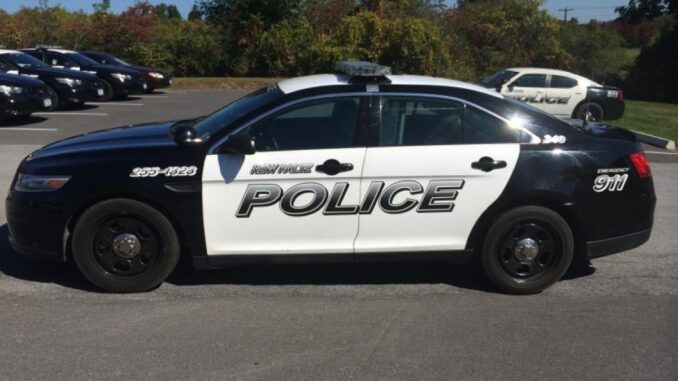
The New Paltz Police Reform and Reinvention Collaborative (NPPRRC) issued their response to Gov. Andrew Cuomo’s Executive Order (EO) 203, on March 10.
The Governor’s EO 203 was issued in June of last year after George Floyd was murdered by a Minneapolis officer. The murder sparked global Black Lives Matter demonstrations and forced governments to reevaluate racism in U.S. policing. The EO called for municipal governments to launch an agency to review its police department in terms of their policies and procedures and develop plans to improve their department’s procedures. The NPPRRC is New Paltz’s agency created to comply with EO 203.
The NPPRRC is made up of Diana Armstead, Deputy Town Supervisor Dan Torres, Jennifer Berry, Albert Cook, Randall Leverette and Esi Lewis.
The NPPRRC’s 39-page report, “Re-imagining Policing in New Paltz” covers recommendations on policies, community safety, criteria of the “ideal officer,” anti-racism, training methods and why they don’t support defunding the police.
“Policing has its roots in slavery and segregation,” states the introduction. “While the 13th Amendment ended slavery, it had a loophole that impacts law enforcement to this day: slavery and servitude was prohibited ‘except as punishment for a crime.’[4] This allowed and encouraged the continued exploitation of Black labor through the hyper-criminalization of Black people, especially young Black men.”
The committee doesn’t actually suggest defunding the police because they say it’s an “oversimplification.”
“In our case, we are bound by laws at the county and state level such that if we were to invest in a separate mental health response system we would no longer be able to participate in those funded at the county and state level,” the NPPRRC wrote. “Since we do not have the resources to provide as much or more than we currently have, we would actually reduce the services we are providing.”
One of the first recommendations the NPPRRC makes is for the New Paltz Police department (NPPD) to remove chokehold restrictions from their policy.
Both Floyd and Eric Garner, another Black man murdered by an officer, died after the officer’s used a chokehold as a form of restraint.
In June New York passed the Eric Garner Anti-Chokehold act, banning New York officers from using chokeholds. Although the New York City Police Department (NYPD) banned the use of chokeholds in 1993, Garner was still murdered by an NYPD officer who used the restraint in 2014.
“The NYPD ban on chokeholds was not enough to protect Eric Garner, and it is not enough today,” said Assembly Speaker Carl Heastie in the press release. “This legislation will put an end to the practice across the state.”
Despite the state-wide ban, the NPPD still has chokeholds in its policy. NPPRRC recommended that the carotid restraint,a technique to restrict blood flow to a person’s brain by compressing the sides of the neck where the carotid arteries are located, be removed from its policy and removing chokehold and carotid restraint materials from training.
The NPPRC wasn’t able to find any data on racial bias in New Paltz because the NPPD has not collected data on race, ethnicity and language.
“The NPPD should immediately begin aggregating data based upon race, ethnicity and language,” the report said. “There is no other means by which we as a community can hold the Department accountable for bias, or laud officers for a lack thereof.”
The collaborative also noted that the NPPD’s “objectively reasonable officer” standard for use of force is “problematic” because “reasonable” is a subjective term applied to an objective action of using force.
“What the officer thinks and feels is the main criteria for justifying the concrete outcomes of use of force,” the committee wrote. “Regardless of what an officer may think or feel, if a person is physically harmed by their actions, that harm is measurable in ways that their feelings are not. The reasonable officer standard begs the question: how are we defining reasonable? If, as a nation, we are questioning whether or not officers act reasonably in instances when force has been used, this question is crucial.”
To combat the “problematic” nature of the “objectively reasonable officer standard,” the NPPRRC recommends that all NPPD officers fit the collaborative’s definition of the “ideal officer.”
The ideal officer wants or has a “deep” connection to their community; actively seeks training especially on social work, addiction, mental health, foreign languages and domestic violence; commits to non-violent solutions and has a demonstrable commitment to anti-racism.
Following that, the collaborative made the distinction that being anti-racist is not the same as being unbiased. The NPPRRC cites Kendra Cherry’s definition of anti-racism as “Anti-racism is a process of actively identifying and opposing racism. Anti-racism is rooted in action. It is about taking steps to eliminate racism at the individual, institutional, and structural levels.”
The NPPRRC said that becoming an anti-racist community requires everyone to share responsibility for continuing bias in life and systems.
“In accepting responsibility for bias and its impact, we acknowledge the liberating power we have to change these damaging realities,” the NPPRRC wrote. “This has a great impact on policing and how we approach community safety.”
To become an anti-racist community, the collaborative suggested that all NPPD officers, the Town and Village board, school board and school district employees take the Intercultural Development Inventory assessment at https://idiinventory.com/.

